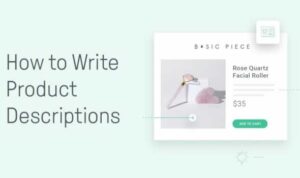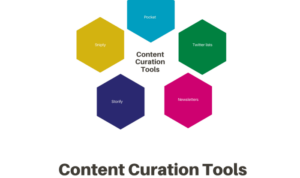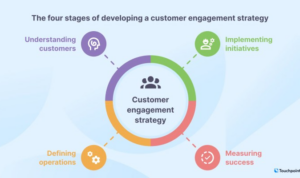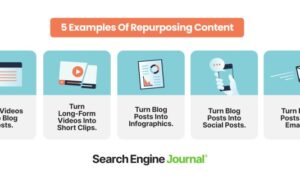Creating Email Drip Campaigns takes center stage, inviting you into a world of marketing mastery. Get ready to dive into the art of engaging your audience through strategic email campaigns that pack a punch.
Are you ready to revolutionize your marketing game? Let’s explore the ins and outs of Creating Email Drip Campaigns and how it can elevate your brand to new heights.
Overview of Email Drip Campaigns: Creating Email Drip Campaigns
Email drip campaigns are a series of automated emails that are sent out based on a predefined schedule or triggered by specific user actions. These campaigns allow marketers to send targeted and personalized messages to leads and customers over time, nurturing them through the sales funnel.
Benefits of Email Drip Campaigns
- Increased Engagement: Drip campaigns help keep your audience engaged with relevant content, leading to higher open and click-through rates.
- Lead Nurturing: By delivering valuable information gradually, drip campaigns help build relationships with leads and move them closer to a purchase decision.
- Time Efficiency: Automating the email sending process saves time and allows for consistent communication with your audience.
- Personalization: Drip campaigns can be tailored to individual preferences and behaviors, increasing the effectiveness of your email marketing efforts.
Examples of Industries Using Email Drip Campaigns
- E-commerce: Online retailers often use drip campaigns to send product recommendations, promotions, and abandoned cart reminders.
- Real Estate: Real estate agents utilize drip campaigns to stay in touch with leads, provide property listings, and offer market updates.
- SaaS Companies: Software as a Service companies use drip campaigns to onboard new users, share product tutorials, and upsell additional features.
- Education: Educational institutions employ drip campaigns for admissions reminders, course information, and alumni engagement.
Planning Your Email Drip Campaign
When it comes to setting up a successful email drip campaign, proper planning is key. You need to have clear goals in mind, segment your audience effectively, and choose the right email marketing platform to ensure your campaign’s success.
Importance of Setting Clear Goals
Setting clear goals before creating an email drip campaign is crucial for measuring its success. Define what you want to achieve with your campaign, whether it’s increasing sales, driving website traffic, or boosting brand awareness. Having specific goals will help you tailor your content and strategy accordingly.
Segmenting Your Target Audience Effectively
To segment your target audience effectively, start by collecting data on your subscribers. Analyze their behavior, preferences, and demographics to divide them into distinct groups. This will allow you to send personalized content that resonates with each segment, increasing engagement and conversions.
Choosing the Right Email Marketing Platform
The email marketing platform you choose can make or break your email drip campaign. Consider factors like ease of use, automation capabilities, deliverability rates, and pricing when selecting a platform. Look for one that aligns with your campaign goals and provides the features you need to reach your target audience effectively.
Creating Compelling Content
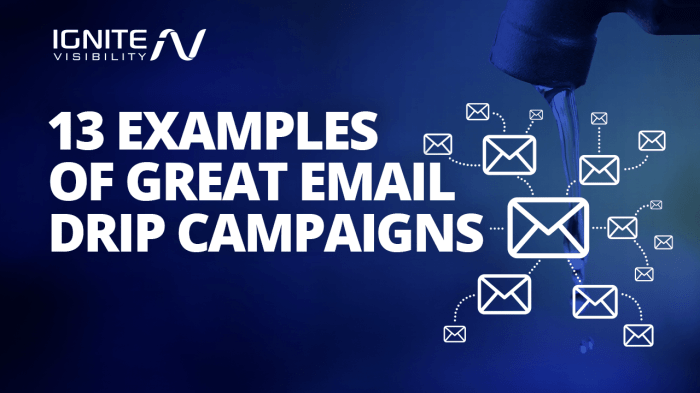
Crafting engaging subject lines is crucial to increasing email open rates. It’s the first thing recipients see, so make it catchy and relevant to grab their attention.
Engaging Subject Lines
- Keep it short and sweet – aim for 50 characters or less.
- Use personalization like the recipient’s name or location.
- Create a sense of urgency or exclusivity with phrases like “Limited Time Offer” or “Exclusive Deal”.
- Avoid spammy words or excessive use of punctuation marks.
Personalized Content
Creating personalized content shows that you value your subscribers and can increase user engagement.
- Segment your email list based on demographics, behavior, or preferences.
- Include dynamic content like product recommendations based on past purchases.
- Add a personal touch with the recipient’s name and tailored recommendations.
- Ask for feedback or opinions to make subscribers feel involved.
Consistent Brand Voice
Maintaining a consistent brand voice throughout your email drip campaign is essential for building brand recognition and trust.
- Define your brand voice – is it casual, professional, humorous, or informative?
- Use the same tone and language in all your emails to establish familiarity.
- Ensure your brand values and messaging align with each email in the campaign.
- Stay true to your brand’s personality to create a cohesive experience for subscribers.
Setting Up Automation
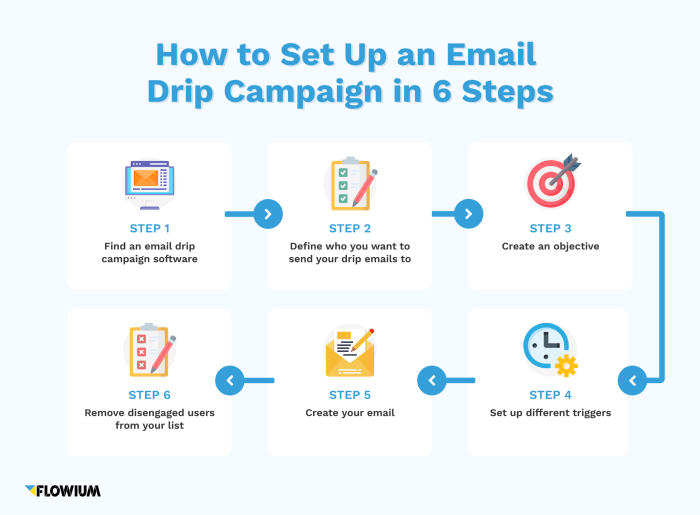
Setting up automation for email drip campaigns involves creating triggers that automatically send out emails based on specific actions or time intervals. By utilizing automation tools, the campaign process is streamlined, saving time and ensuring that emails are sent out consistently without manual effort.
Benefits of Using Automation Tools
- Increased efficiency: Automation allows emails to be sent out at the right time without constant monitoring.
- Personalization: Automation tools can segment subscribers based on behavior or preferences, allowing for more targeted and personalized content.
- Improved engagement: By sending timely and relevant emails, automation can help increase open rates and click-through rates.
- Time-saving: Setting up automation sequences in advance saves time and allows for a more hands-off approach to email marketing.
Examples of Effective Automation Sequences
1. Welcome series: A series of emails triggered when a subscriber joins the mailing list, introducing them to the brand and encouraging engagement.
2. Abandoned cart emails: Automatically send reminders to customers who leave items in their online shopping cart, encouraging them to complete their purchase.
3. Birthday emails: Send personalized birthday wishes and offers to subscribers on their special day, increasing customer loyalty.
Monitoring and Optimizing Performance
When it comes to email drip campaigns, monitoring and optimizing performance is key to ensuring the success of your strategy. By tracking key metrics such as open rates, click-through rates, and conversions, you can gain valuable insights into how your audience is engaging with your emails.
Importance of Tracking Key Metrics
- Open Rates: Measure how many recipients actually open your emails. Low open rates may indicate that your subject lines are not engaging enough.
- Click-Through Rates: Indicates how many recipients are clicking on the links in your emails. This helps you understand the effectiveness of your content and call-to-action.
- Conversions: The ultimate goal of your email drip campaign is to drive conversions. Tracking this metric helps you evaluate the overall success of your campaign.
How A/B Testing Can Help, Creating Email Drip Campaigns
A/B testing involves sending two variations of an email to different segments of your audience to see which performs better. This can help you optimize your email drip campaigns by identifying what resonates with your audience and what doesn’t. By testing different subject lines, content, or call-to-action buttons, you can refine your emails for better results.
Strategies for Refining Email Drip Campaigns
- Use performance data to make informed decisions: Analyze the metrics and adjust your strategy accordingly. If a particular email is underperforming, try tweaking the content or subject line.
- Segment your audience: Tailor your emails to different segments of your audience based on their behavior or preferences. This personalized approach can lead to better engagement and conversions.
- Experiment with different send times: Test sending your emails at different times of the day to see when your audience is most responsive.
